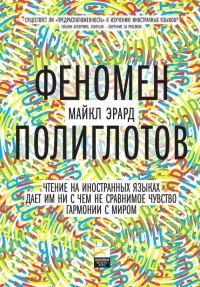Ознакомительная версия. Доступно 32 страниц из 159
Goodkind, Madeleine, Simon B. Eickhoff, Desmond J. Oathes, Ying Jiang, Andrew Chang, Laura B. Jones-Hagata, Brissa N. Ortega, Yevgeniya V. Zaiko, Erika L. Roach, and Mayuresh S. Korgaonkar. 2015. “Identification of a Common Neurobiological Substrate for Mental Illness.” JAMA Psychiatry 72 (4): 305–315.
Goodman, Morris. 1999. “The Genomic Record of Humankind’s Evolutionary Roots.” American Journal of Human Genetics 64 (1): 31–39.
Goodnough, Abby. 2009. “Harvard Professor Jailed; Officer Is Accused of Bias.” New York Times, July 20. http://www.nytimes.com/2009/07/21/us/21gates.html.
Gopnik, Alison. 2009. The Philosophical Baby: What Children’s Minds Tell Us About Truth, Love and the Meaning of Life. New York: Random House.
Gopnik, Alison, and David M. Sobel. 2000. “Detecting Blickets: How Young Children Use Information About Novel Causal Powers in Categorization and Induction.” Child Development 71 (5): 1205–1222.
Gosselin, Frédéric, and Philippe G. Schyns. 2003. “Superstitious Perceptions Reveal Properties of Internal Representations.” Psychological Science 14 (5): 505–509.
Gottman, John M., Lynn Fainsilber Katz, and Carole Hooven. 1996. “Parental Meta-Emotion Philosophy and the Emotional Life of Families: Theoretical Models and Preliminary Data.” Journal of Family Psychology10 (3): 243–268.
Government Accountability Office (GAO). 2013. “Aviation Security: TSA Should Limit Future Funding for Behavior Detection Activities (GAO-14–159).” http://www.gao.gov/products/GAO-14-159.
Grandin, Temple. 1991. “An Inside View of Autism.” http://www.autism.com/advocacy_grandin.
——— . 2009. “How Does Visual Thinking Work in the Mind of a Person with Autism? A Personal Account.” Philosophical Transactions of the Royal Society of London B: Biological Sciences 364 (1522): 1437–1442.
Graziano, Michael S. A. 2013. Consciousness and the Social Brain. New York: Oxford University Press.
——— . 2016. “Ethological Action Maps: A Paradigm Shift for the Motor Cortex.” Trends in Cognitive Sciences 20 (2): 121–132.
Greene, Brian. 2007. The Fabric of the Cosmos: Space, Time, and the Texture of Reality. New York: Vintage.
Grill-Spector, Kalanit, and Kevin S. Weiner. 2014. “The Functional Architecture of the Ventral Temporal Cortex and Its Role in Categorization.” Nature Reviews Neuroscience 15 (8): 536–548.
Gross, Cornelius T., and Newton Sabino Canteras. 2012. “The Many Paths to Fear.” Nature Reviews Neuroscience 13 (9): 651–658.
Gross, James J. 2015. “Emotion Regulation: Current Status and Future Prospects.” Psychological Inquiry26 (1): 1–26.
Gross, James J., and Lisa Feldman Barrett. 2011. “Emotion Generation and Emotion Regulation: One or Two Depends on Your Point of View.” Emotion Review 3 (1): 8–16.
Guarneri-White, Maria Elizabeth. 2014. Biological Aging and Peer Victimization: The Role of Social Support in Telomere Length and Health Outcomes. Master’s thesis, University of Texas at Arlington, 1566471.
Guillory, Sean A., and Krzysztof A. Bujarski. 2014. “Exploring Emotions Using Invasive Methods: Review of 60 Years of Human Intracranial Electrophysiology.” Social Cognitive and Affective Neuroscience 9 (12): 1880–1889.
Gweon, Hyowon, Joshua B. Tenenbaum, and Laura E. Schulz. 2010. “Infants Consider Both the Sample and the Sampling Process in Inductive Generalization.” Proceedings of the National Academy of Sciences107 (20): 9066–9071.
Hacking, Ian. 1999. The Social Construction of What? Cambridge, MA: Harvard University Press.
Hagelskamp, Carolin, Marc A. Brackett, Susan E. Rivers, and Peter Salovey. 2013. “Improving Classroom Quality with the Ruler Approach to Social and Emotional Learning: Proximal and Distal Outcomes.” American Journal of Community Psychology 51 (3–4): 530–543.
Halperin, Eran, Roni Porat, Maya Tamir, and James J. Gross. 2013. “Can Emotion Regulation Change Political Attitudes in Intractable Conflicts? From the Laboratory to the Field.” Psychological Science 24 (1): 106–111.
Halpern, Jake. 2008. Fame Junkies: The Hidden Truths Behind America’s Favorite Addiction. Boston: Houghton Mifflin Harcourt.
Hamlin, J. Kiley, George E. Newman, and Karen Wynn. 2009. “Eight-Month-Old Infants Infer Unfulfilled Goals, Despite Ambiguous Physical Evidence.” Infancy 14 (5): 579–590.
Haney, Craig. 2005. Death by Design: Capital Punishment as a Social Psychological System. New York: Oxford University Press.
Hanson, Jamie L., Nicole Hair, Dinggang G. Shen, Feng Shi, John H. Gilmore, Barbara L. Wolfe, and Seth D. Pollak. 2013. “Family Poverty Affects the Rate of Human Infant Brain Growth.” PLOS One 8 (12): e80954. doi:10.1371/journal.pone.0080954.
Hare, Brian, and Vanessa Woods. 2013. The Genius of Dogs: How Dogs Are Smarter than You Think. New York: Penguin.
Harmon-Jones, Eddie, and Carly K. Peterson. 2009. “Supine Body Position Reduces Neural Response to Anger Evocation.” Psychological Science 20 (10): 1209–1210.
Harré, Rom. 1986. The Social Construction of Emotions. New York: Blackwell.
Harris, Christine R., and Caroline Prouvost. 2014. “Jealousy in Dogs.” PLOS One 9 (7): e94597. doi:10.1371/journal.pone.0094597.
Harris, Paul L., Marc de Rosnay, and Francisco Pons. In press. “Understanding Emotion.” In Handbook of Emotions, 4th edition, edited by Lisa Feldman Barrett, Michael Lewis, and Jeannette M. Haviland-Jones, 293–306. New York: Guilford Press.
Harrison, Neil A., Lena Brydon, Cicely Walker, Marcus A. Gray, Andrew Steptoe, and Hugo D. Critchley. 2009. “Inflammation Causes Mood Changes Through Alterations in Subgenual Cingulate Activity and Mesolimbic Connectivity.” Biological Psychiatry 66 (5): 407–414.
Harrison, Neil A., Lena Brydon, Cicely Walker, Marcus A. Gray, Andrew Steptoe, Raymond J. Dolan, and Hugo D. Critchley. 2009. “Neural Origins of Human Sickness in Interoceptive Responses to Inflammation.” Biological Psychiatry 66 (5): 415–422.
Hart, Betty, and Todd R. Risley. 1995. Meaningful Differences in the Everyday Experience of Young American Children. Baltimore: Paul H. Brookes.
——— . 2003. “The Early Catastrophe: The 30 Million Word Gap by Age 3.” American Educator 27 (1): 4–9.
Hart, Heledd, and Katya Rubia. 2012. “Neuroimaging of Child Abuse: A Critical Review.” Frontiers in Human Neuroscience 6 (52): 1–24.
Harvey, Allison G., Greg Murray, Rebecca A. Chandler, and Adriane Soehner. 2011. “Sleep Disturbance as Transdiagnostic: Consideration of Neurobiological Mechanisms.” Clinical Psychology Review 31 (2): 225–235.
Ознакомительная версия. Доступно 32 страниц из 159
























